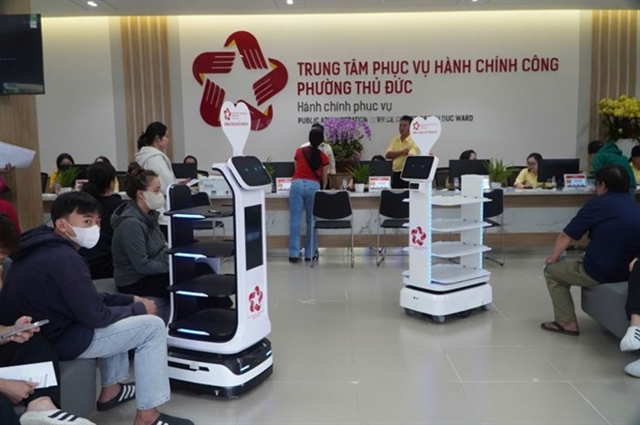 Media-OutReach Newswire
Media-OutReach Newswire

SINGAPORE- MediaOutReach - 29September 2020 - Workers in Asia Pacific are facing increasedburnout due to lack of separation between work and personal life as well as worryof contracting COVID-19, according to Microsoft's latest WorkTrend Index report. On average, close to one third ofworkers in Asia Pacific cited increased rates of burnout over the past sixmonths, with the lack of separation between work duties and personalobligations as negatively impacting their wellbeing.

|
Surveyingover 6,000 information and first-line workers across eight countries globallyincluding Australia, Japan, India and Singapore, the study found that Singaporeand India were the top two countries in the region with workers facingincreased burnout, at 37 percent and 29 percent respectively. In addition,close to 34 percent of Asia Pacific respondents cited worry about contractingCOVID-19, due to the lack of tech or protective equipment provided bybusinesses to effectively socially distance, resulting in increased stresslevels.
"Inthe last 6 months, we have seen how COVID-19 has contributed to the evolutionof the workplace -- from a physical space to one residing in a virtual world. Asbusinesses adapt to a new way of working, it is important to examine themultifaceted impact these changes are having on employees and provide relevantand timely solutions," said Rosalind Quek, General Manager, ModernWorkplace, Microsoft Asia.
Inspired by this research and conversations withcustomers, Microsoft announced the start of a longer journey to evolve itsproductivity tools to promote individualwellbeing and organizational resilience.A series of updates have been launched within Microsoft Teams to supportemployee wellbeing. These include a virtual commute experience that helps usersprepare for the day and mindfully disconnect in the evening and new insights thatsupports managers and leaders in understanding how work happens, and its impacton employee wellbeing. Microsoft has also partnered with Headspace to bring acurated set of mindfulness and meditation experiences into the Teams platformand launched new Teams experiences for FirstlineWorkers to support them withthe tools they need to work more safely.
KeyFindings from the research include:
1. The pandemic increased burnout at work -- in somecountries more than others
InAsia Pacific, 29 percent of respondents cited that the pandemic has increasedtheir sense of burnout at work. However, Microsoft's research showed that everyoneis experiencing this differently. For instance, Microsoft found that 37 percentof workers in Singapore are experiencing higher rates of burnout than those inAustralia, India and Japan. While burnout can be attributed to many factors,the chart below explores how longer workdays impact feelings of burnout. Forexample, workers in Australia[1] saw the highest increasein workday span in Microsoft Teams at 45 percent, with a medium increase inburnout while workers in Germany saw very little change to workday span orfeelings of burnout.
2. Causes of workplace stress differ for firstlineand remote workers
The report also revealed that the top stressor sharedglobally was worry about contracting COVID-19, followed by lack of separationbetween work and life, feeling disconnected from co-workers, and unmanageableworkload or hours. In Asia, the study found that over 34 percent of workers have not been providedthe tech or protective equipment they need to effectively socially distance bytheir company, resulting to increased stress levels. This was higher than theglobal average by 4 percentage points. In addition, among the stressorsreported by remote workers, the lack of separation between work and life andfeeling disconnected from coworkers ranked highest.
Countriesacross Asia also had cited differing factors contributing to work stress. In Australiaand Singapore, the lack of separation between work and life was the topstressor with 24 percent and 31 percent respectively, with the feeling ofisolation coming closely behind at 22 and 28 percent. However, in countriessuch as India and Japan, 42 percent and 26 percent respectively cited theinability to socially distance and the worry about contracting COVID-19 whileon the job as a top stressor.
3. Six months in there are more communications and fewerboundaries
Havingidentified lack of separation between work and life, along with unmanageablework hours, as top workplace stressors, Microsoft turned to usage patterns in Teams formore insight.
Datashowed that globally, even six months past the first work-from-home orders, people are in significantly moremeetings, taking more ad hoc calls and managing more incoming chats than theydid before the pandemic. As people adjusted to remote working, after hourschats, or chats between 5pm and midnight, have also increased.
4. No commute may be hurting, not helping, productivity forremote workers in Asia
Foryears, Microsoft's research group has been studying how commute has helpedmaintain work-life boundaries--and worker's productivity and wellbeing. A 2017study helps us understand the productivity benefits of commute time. As part ofthe study, a digital assistant used chat conversations featuring task- andemotion-based questions to help participants prepare and detach from workthrough the day. The study found that 6 in 10 people (61 percent) globally feltthey were more productive when the digital assistant helped them ramp up to anddown from work. On average, productivity increased between 12 and 15 percent.
Thenew virtual commute experience in Teams will help workers have a productivestart in the morning and mindfully disconnect in the evening. Users can expect tocustomize their experiences from a set of suggested tasks such as meditationwith the Headspace app, reflecting on the day or helping workers close out onoutstanding tasks.
5. Studies show meditation can fight burnout and stressduring the workday
Ofthose surveyed in Asia, 73 percent said meditation could help decrease their work-related stress.External research backs this up --consistent meditation with Headspace can decrease stressand burnoutand improveyour ability to react to negative feedback.
Thus,Microsoft's partnership with Headspace will offer workers the ability toschedule ad hoc or recurring time for mindfulness breaks anytime -- before a bigmeeting or to find focus needed to start on an important project.
AsMicrosoft continues to learn more about wellbeing at work, users can expect tosee related innovation continue to be developed across Microsoft 365 and Teams.For more information on the product updates mentioned in this report visit the Microsoft365 blog. You can also read the full research here[2].
[1]Workday span is the time between a person's first and last active use ofMicrosoft Teams, such as sending a chat, editing a document or attending ameeting.
[2]Privacyapproach: Microsoft takes privacy seriously. We remove all personal data andorganization- identifying data, such as companyname, from the data beforeusing it to produce reports.We never use customer content such as information withinan email, chat,document, or meetingto produce reports.Our goal is to discover and share broad workplace trendsfrom aggregated data from the Microsoft Graph.
Microsoft (Nasdaq"MSFT" @microsoft) enables digital transformation for the era of an intelligentcloud and an intelligent edge. Its mission is to empower every person and everyorganization on the planet to achieve more.


.jpg)

